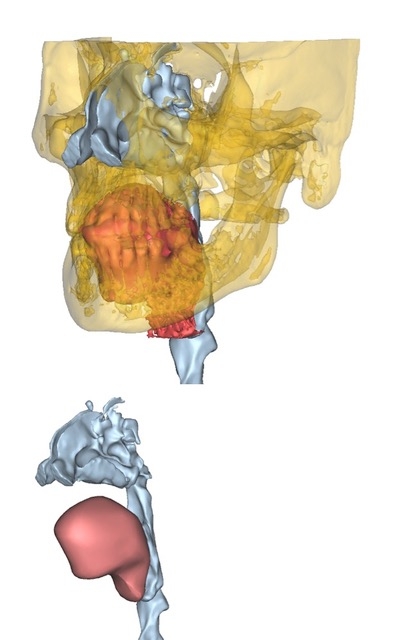The standard of care for head and neck reconstruction is microvascular free-tissue transfer. Various techniques of soft tissue, free-flap design have previously been described. Patient-specific planning and 3D printing have changed practice in bony reconstruction, but are not currently used in soft tissue head and neck reconstruction. We present the first report of Personalised pAtient-specific plaNning of SOFt tissue recOnStruction, the “PANSOFOS” flap, and aim to prove that the technique has a place in soft tissue reconstruction of the head and neck. Using the IDEAL framework for the reporting of surgical innovations (IDEAL stage 1, proof of concept report), we describe the case of a patient with oral cancer who had reconstruction of the tongue after hemiglossectomy. The staging scans, 3D printer and software were used to create a soft silicon resection guide and flap harvesting guide.
The 3D guide was then used to design a 2D outline of the perimeter of the flap, and a negative silicone mould used to control its bulk. The procedure was successful and the postoperative period uneventful. The oncological, cosmetic, and functional outcomes were excellent. The patient followed the local enhanced recovery pathway and was discharged home with safe swallowing. This report confirms that patient-specific 3D planning can be used in the reconstruction of soft tissue defects of the head and neck. We aim to develop the technique using the next stages of the IDEAL framework, and anticipate that the PANSOFOS flap will become a standard of care.

